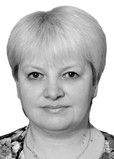External respiratory function rating in special health group health tests
Фотографии:
ˑ:
PhD, Associate Professor I.A. Varentsova1
Dr.Biol., Professor V.N. Pushkina2
PhD, Associate Professor A.V. Kochnev1
T.V. Anoshina1
1Northern (Arctic) Federal University n.a. M.V. Lomonosov, Arkhangelsk
2Peoples' Friendship University of Russia, Moscow
The study was designed to apply an automatic Spiro C-100 spirometer to rate health of female students attributed to the special health group based on the external respiratory function rating data. Sampled for the study were the female students attributed to the special health group and diagnosed with bronchial system deficiency in the large and middle bronchi; weak respiratory muscles and limited lung expansibility. These health conditions are naturally associated with the deficient general adaptation reserves as verified by the low vital capacities and external ventilation system disorders manifested, among other things, in the low vital capacities. Due efforts need to be taken to mitigate or reverse the health deterioration trends by new physical education models customizable to the progress needs of this health group with a special priority to the sets of expansion and relaxation respiratory practices geared to strengthen the intercostals, abdomen and diaphragm muscles and the cardio-respiratory system on the whole; improve the metabolic processes; and scale down the nervous tension, with a special emphasis on the reasonable physical activity highly important for this health group.
Keywords: female student, special health group, external respiratory system, breathing exercises.
References
- Bogoyeva M.D., Rumba O.G., Gorelov A.A. Postroenie protsessa fizicheskogo vospitaniya studentok s ogranichennymi vozmozhnostyami serdechno-sosudistoy sistemy [Physical education process design for students with cardiovascular disorders]. Belgorod: POLITERRA publ., 2011, 172 p.
- Gudkov A.B., Popova O.N. Vneshnee dykhanie cheloveka na Evropeyskom Severe [External breathing of man in the North of Europe]. Arkhangelsk: Northern State Medical University publ., 2012, 252 p.
- Makarova G.A. Sportivnaya meditsina [Sports medicine]. Moscow: Sovetskiy sport publ., 2008, 490 p.
- Pushkina V.N., Kalgin V.V., Gernet I.N., et al. Otsenka zdorovya studencheskoy molodezhi na nachalnom etape obucheniya v vuze [Student's health evaluation at initial stage of university studies]. Mat. 11 Mezhdunar. nauch-prakt. konf. molodykh uchenykh i studentov 'Valeopedagogicheskie problemy zdoroveformirovaniya detey, podrostkov, molodezhi, naseleniya' [Proc. 11th Intern. res.-pract. conf. young scientists and students 'Valedagogical problems of health formation in children, adolescents, youth, population']. December 4, 2015. Yekaterinburg: RSPPU publ., 2015, pp. 224-225.
- Chernozemov V.G., Abramova M.A. Funktsionalnye vozmozhnosti sistemy vneshnego dykhaniya pri skolioticheskoy bolezni u shkolnikov [Functional possibilities of external respiration system under scoliotic disease in schoolchildren]. Fundamentalnye issledovaniya, 2012, no. 2, pp. 159–162.



 Журнал "THEORY AND PRACTICE
Журнал "THEORY AND PRACTICE